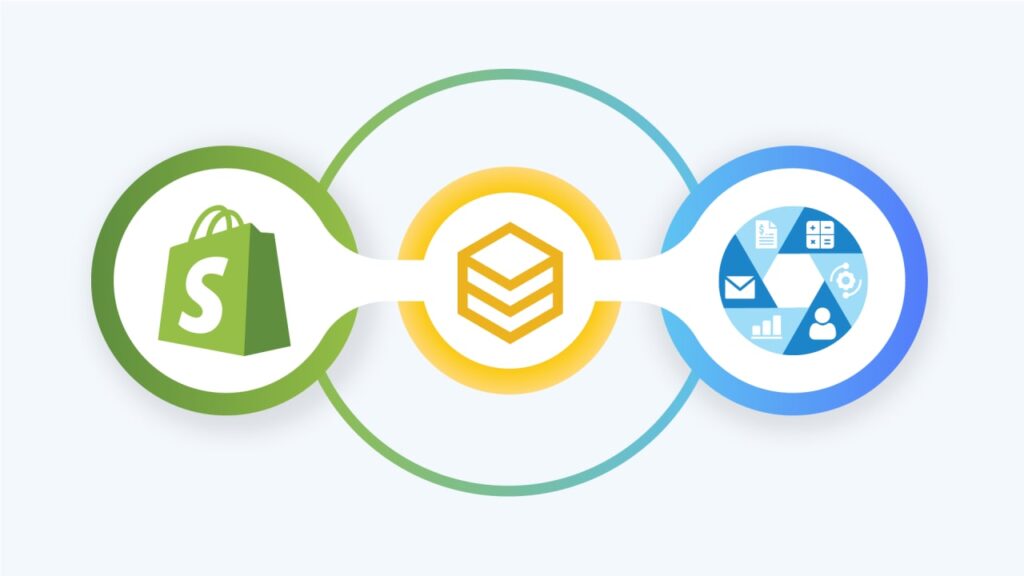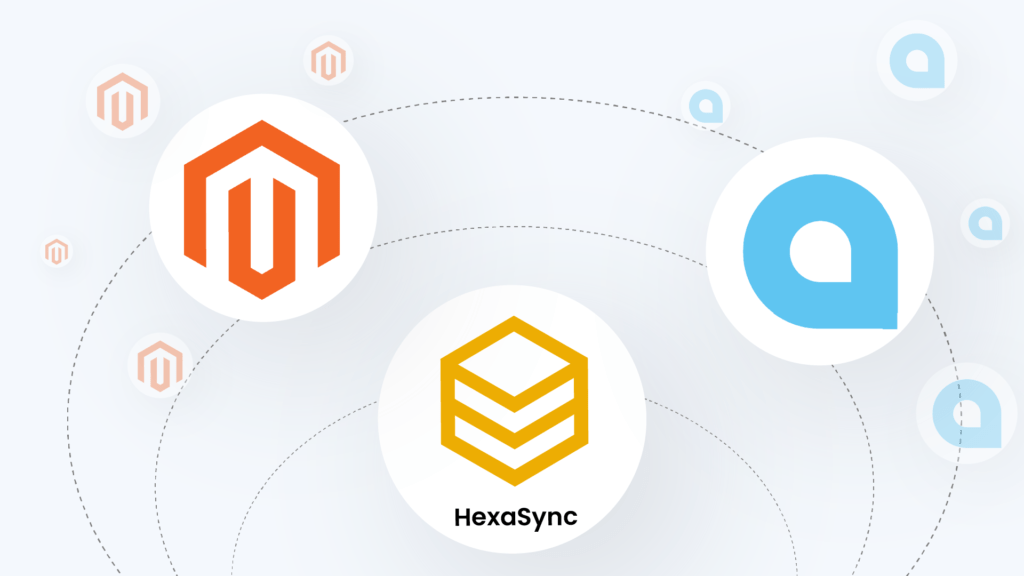Table of Contents
Introduction
Shopify and WooCommerce are some of the most popular solutions among the world’s leading eCommerce platforms. This article will compare Shopify vs WooCommerce dropshipping in many aspects to help you decide which is the better option for your business.
First, we will go through some general information about these two platforms. Shopify is currently deployed by more than 4,611,844 websites worldwide and accounts for nearly 20% of the web’s eCommerce, according to Builtwith. Meanwhile, WooCommerce powers 27% of all online stores– 5,406,925 websites and is used by nearly 94% of all WordPress eCommerce sites.
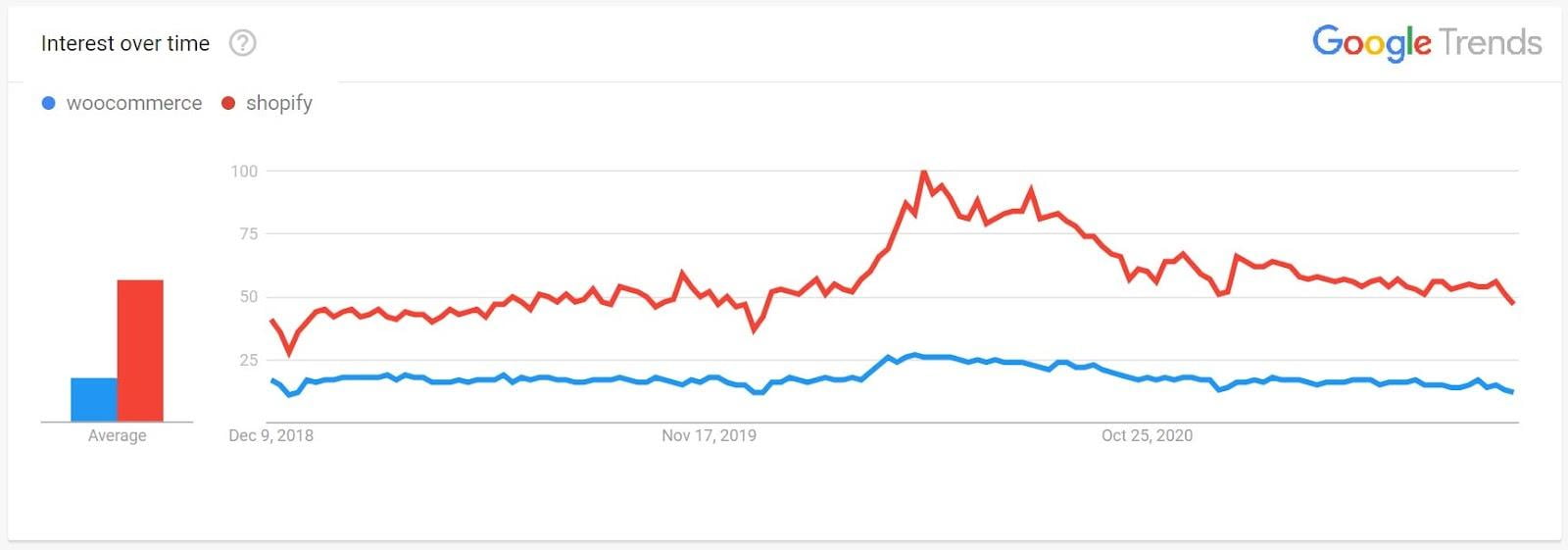
If you look at Google Trends over the last few years, you’ll find out that both WooCommerce and Shopify have been growing steadily, with Shopify somewhat ahead of WooCommerce in terms of interest.
You might wonder what dropshipping is and how it can help you establish your new online retail business. Let’s start with the short and sweet answer before delving deeper into what precisely WooCommerce and Shopify dropshipping entail. If you want to know more about WooCommerce, our article WooCommerce Review will offer you some relevant information.
What is Dropshipping?
Dropshipping is the practice of selling products through online stores without keeping a stock of goods. The merchant sends the customer’s orders and shipping information to the manufacturer or wholesaler, who then ships the items to the customer directly.
Pros and Cons of Dropshipping
The simplicity of dropshipping model makes opening an eCommerce store easy for anyone. In general, dropshipping brings a series of below benefits to store owners:
-
- Little Capital
-
- Simple to expand
-
- Easy to manage
-
- Sell a variety of products
-
- Few overhead costs
In contrast, this model also has some disadvantages:
-
- Low margins
-
- Customer service problems because of not directly managing the inventory
-
- Can not control inventory or supplier issues
-
- Higher shipping costs
Shopify vs WooCommerce Dropshipping: Pricing
Start-up money
There is no specific amount to start dropshipping on these two platforms. With Shopify, the amount depends on the niche you want to go into. Once you’ve decided on your niche and found the optimal plan based on your chosen niche and your sales goals, you’ll calculate the necessary costs.
Regarding WooCommerce, there will be some costs associated with launching a new store. However, the cost can be customized depending on your business’s capabilities, needs, etc.
Long-term cost
There are 3 plans for the Shopify store, priced at $29, $79, and $299, respectively. All have different feature sets and capabilities. Above this cost, you will have to pay 30¢ per transaction.

WooCommerce is a plugin that is available for free. However, it does not allow you to establish a fully working internet business for free. The business owners must pay payment processing commissions for the installed domain, hosting, security and extensions. They won’t cost much if you find the right provider and spend wisely. For instance, you can get these as low as:
-
- Domain: $10 – $20 per year
-
- Hosting: $35 – $50 per year
-
- Security: $0 – $200 per year
-
- Extension: $0 – $100 per year
Shopify vs WooCommerce Dropshipping: Set-up time
Setting up a store on WooCommerce is more complicated and time-consuming than on Shopify. Creating a store on this platform can take a few days to some weeks because you have to go through many steps like installing WordPress, and WooCommerce with necessary plugins, customizing the theme, integrating payment gateway/customization, adjusting the delivery policy as well, as testing.
Otherwise, it takes about 30-60 minutes to set up a Shopify store, but completing a basic website can take 3-4 days, even weeks. It all depends on how well you already know the business, how much product you intend to supply, and more. Therefore, you should plan before carrying it out to save time.
Shopify vs WooCommerce Dropshipping: Theme
WooCommerce offers a lot of templates for you to select. Besides, you can choose any theme on WordPress as long as it works with this platform. WooCommerce themes are all mobile responsive. However, how good the theme design on WooCommerce looks depends on your technical level as well as the time you spend.

Created by professional website designers, Shopify themes are highly polished, including 70 free and paid themes. In particular, the themes you choose can be customized by the Shopify admin using Liquid coding and the theme editor.
Generally speaking, Shopify creators have designed great themes, but it’s limited to what’s available in the store. Meanwhile, WooCommerce themes are freely designed by a community of developers and freelancers.

Shopify vs WooCommerce Dropshipping: Features
WooCommerce features
-
- Support for services and physical goods, one-time purchases, and subscriptions
-
- Payment through WooCommerce Payments without setup or monthly fees
-
- Support for credit cards, bank transfers, cheques, Stripe, PayPal, Apple Pay, Google Pay, and more
-
- Native shipping integration for US customers, third-party solutions for those elsewhere
-
- A mobile app for order management
-
- Marketing integrations, supporting leading platforms such as Mailchimp, Facebook, Google Ads, and Google Analytics
-
- Thousands of free and premium themes and extensions
-
- Full translations into 24 languages
-
- A block-based design approach mirroring the WordPress editor
Shopify features
-
- Unlimited products
-
- Staff members with access to the Shopify admin and Shopify POS.
-
- 24/7 support
-
- Sales channels
-
- Sell on online marketplaces and social media. Channel availability varies by country.
-
- Assign inventory to retail stores, warehouses, pop-ups, or wherever you store products.
-
- Manual order creation
-
- Free SSL certificate
-
- Abandoned cart recovery
-
- Gift cards, Reports & Discount codes
-
- Fraud analysis
-
- Online credit card rates
-
- In-person credit card rates
-
- Transaction fee if not using Shopify Payments
-
- Shopify POS Lite
-
- Accept in-person payments instantly at pop-ups, markets, fairs, and more.
-
- Store management tools and omnichannel features are essential for brick-and-mortar businesses.
-
- Sell in 133 currencies & multiple languages
-
- Use price rounding to create consistency in your prices after conversion.
Overall
Both systems can support dropshipping businesses. Setting up a dropshipping store is simple by using WooCommerce and Shopify. Each platform works flawlessly with various suppliers, and there are numerous plugins and apps to help with product uploading and order fulfillment.
Shopify vs WooCommerce Dropshipping: Ease of use
Shopify is a fully-hosted platform, whereas WooCommerce is self-hosted. This means Shopify doesn’t require any setup, data management, backups, updates, security upgrades, or compatibility testing. Its drag-and-drop interface can be used to create a store.
Shopify is an all-in-one eCommerce website builder that will give you a great website in minutes. It offers unprecedented flexibility and power-packed performance. Even if you’re a complete novice, Shopify support is available 24 hours a day, 7 days a week, to assist you with technical issues.
When it comes to WooCommerce, if you pick managed WooCommerce hosting, you can get your store up and running in approximately the same amount of time. Otherwise, the time is determined by your skill. Because setting up your eCommerce store requires understanding a few web development aspects.
Shopify is the preferable alternative if you start from scratch and have limited technical knowledge. It’s a lot faster and easier to get your store up and operating. When it comes to putting up your store, you have help, and you don’t need to know how to code to get the most out of it. The process isn’t as manual as putting up a store with WordPress and Woocommerce, so you will need some time to get everything right.



Shopify Woocommerce Integration



Shopify Bigcommerce Integration



Shopify Wix Integration
Shopify vs WooCommerce Dropshipping: Help and Support
WooCommerce does not support direct contact with customers. However, when merchants have problems or want to control their support strategy, WooCommerce supports a lot of resources. Specifically, you can access the WooCommerce Docs or refer to the FAQ section to resolve.
In contrast, Shopify is famous for its customer service that merchants can contact 24/7 for phone, email, or live chat. Furthermore, this platform has a forum ready to help you and a huge database of FAQs.
Shopify vs WooCommerce Dropshipping: Scalability
WooCommerce is 100% customizable due to its open-source. You have the option of selecting a theme from a large selection of professional-grade and high-quality themes. You may customize the various areas of your site, such as the header, footer, checkout, product pages, and so on, to make it seem exactly how you want it to. It will be even easier if you are familiar with CSS, HTML, and PHP style codes. Furthermore, even the plugins can be customized. However, WooCommerce doesn’t offer many capabilities out of the box. This is mainly because it lacks some essential advanced features to make store management easier.
Shopify, on the other hand, has everything that a beginner could feel comfortable with, from built-in analytics and features to keep track of your store, customers, inventories, and conversions tracking to drag and drop page builder. It is also easy to scale as you can switch to a bigger plan when you see your business growth. Nevertheless, you can save money with WooCommerce by doing the technical stuff on your own.
While many consumers believe Shopify is a little pricey, it’s vital to remember that you get everything in one place. Managing a dropshipping business can be challenging and time-consuming. Shopify might help you when you are getting used to eCommerce; in the long term, WooCommerce would be more profitable.
Shopify vs WooCommerce Dropshipping: SEO
Marketing tools can assist your company in doing dropshipping and allow you to connect with new clients and customers. You should ensure your store appears at the top of Google’s search results. Also, you want your company’s name to appear when customers search for words connected to your product. Both Shopify and WooCommerce have great SEO plugins to assist your dropshipping business.
WooCommerce is developed with SEO-friendly code and is fully integrated with WordPress, including its excellent suite of SEO plugins. You can go all out and give your sites extensive meta descriptions and titles to let Google know what they’re about.
Basic SEO information may also be easily added to your store using Shopify. You can give your photographs, goods, and pages titles and descriptions.
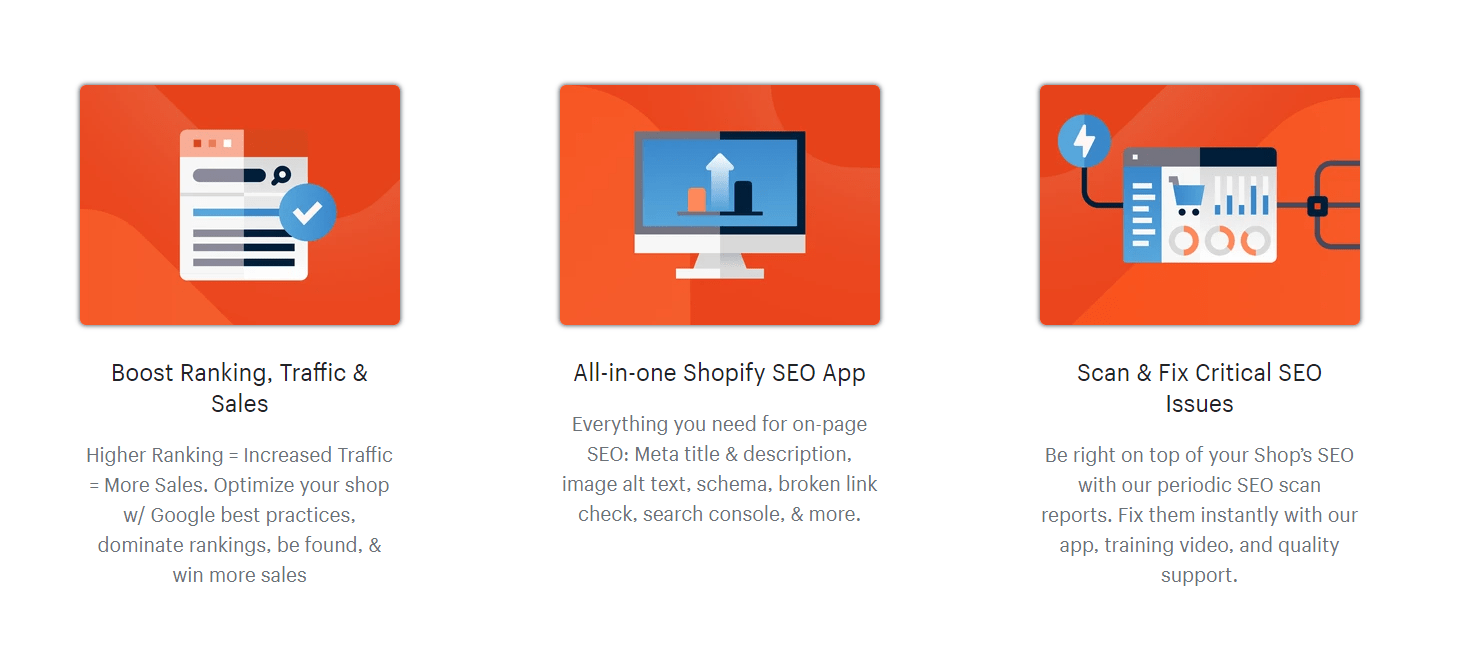
Shopify and WooCommerce include apps and integrations to help your store rank higher. Although Shopify offers fewer apps in the App Store, you can still scan your store and resolve issues that could impact the speed of your site.
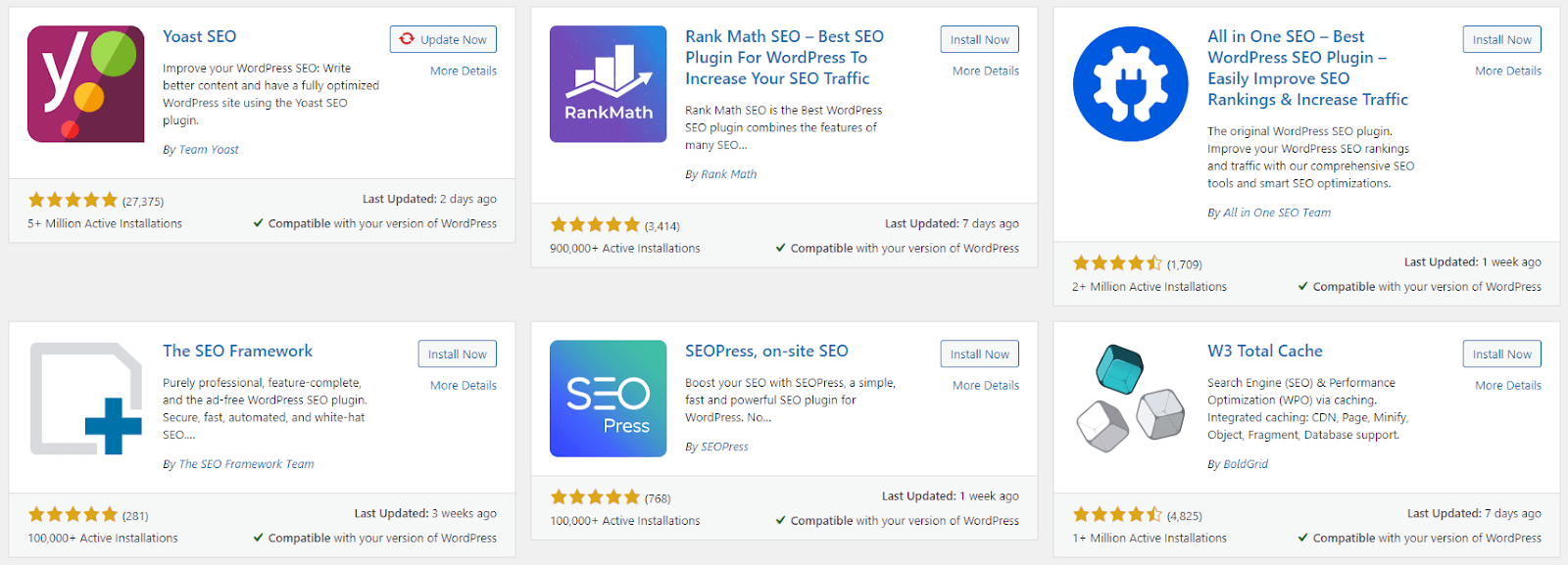
Shopify vs WooCommerce Dropshipping: Shipping
As a dropshipping, you should consider which shipping methods are available for your customers. Both WooCommerce and Shopify allow you to customize your shipping charges based on many factors, such as product size and weight, local and international delivery, and so on. If you want to go any further, you may set up a real-time shipping cost computation using multiple delivery choices such as FedEx and UPS.
Shopify provides shipping labels, and you can print shipping labels for orders using a standard printer. However, third-party calculated shipping rates (DHL Express, UPS, or USPS) are only available with the Advanced Plan.
WooCommerce does have a shipping plugin of its own. You can start shipping domestically or internationally with USPS and DHL.

Shopify vs WooCommerce Dropshipping: Apps & Plugins
Each platform works flawlessly with a variety of suppliers, and there are numerous plugins and apps to help with product uploading and order fulfillment. You can find dropshipping extensions on the WordPress repository or Shopify App store. There are also several third-party extensions on the market as well.
WooCommerce Dropshipping Plugins
-
- AliDropship
-
- WooDropship
-
- Dropified
-
- Spocket
-
- DropshipMe
-
- WpAmazonShop
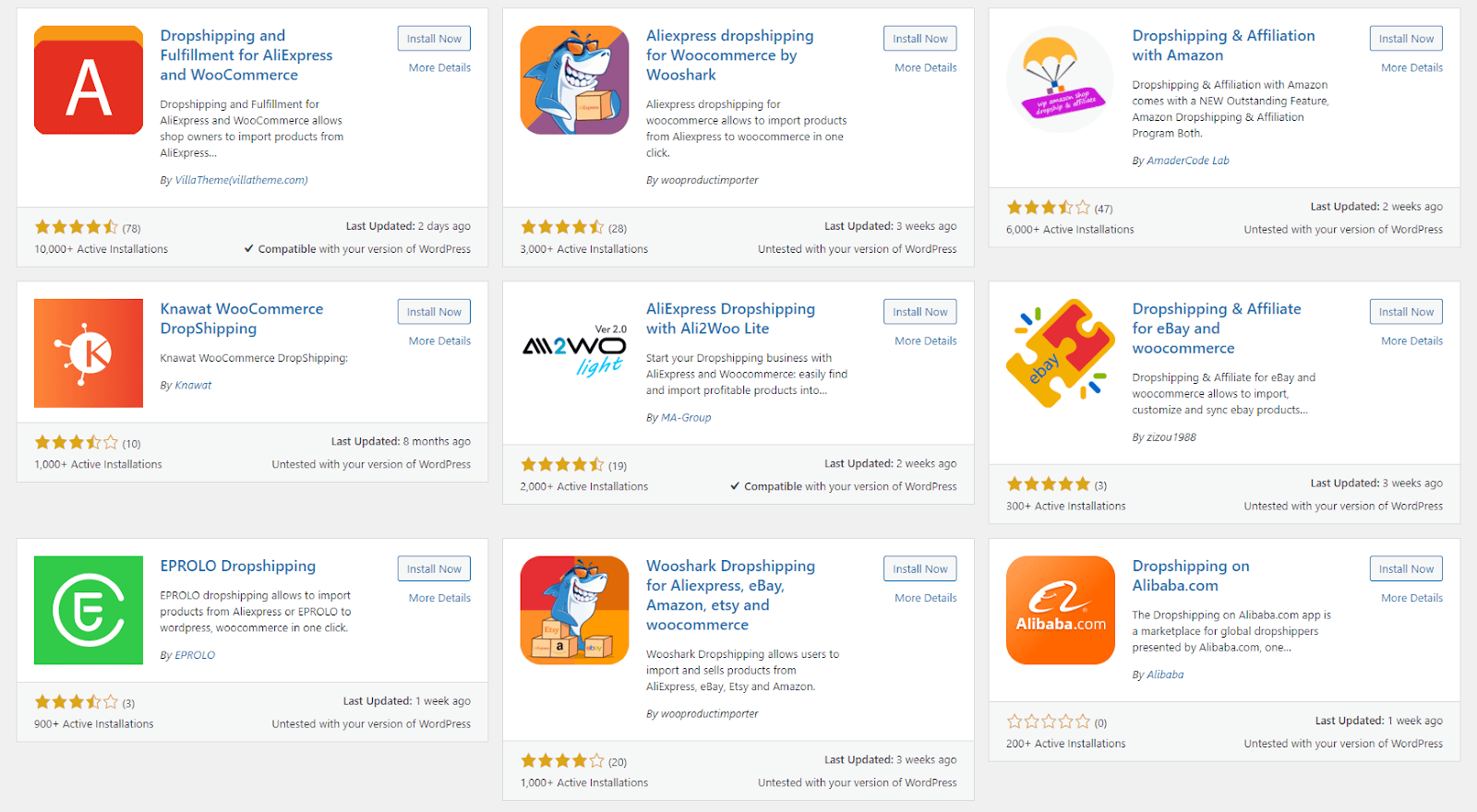
Shopify Dropshipping Plugins
-
- Spocket
-
- Ali Orders AliExpress Dropship
-
- MIIUT ‑ Unlimited Dropshipping
-
- CJDropshipping
Shopify also integrates with third-party dropshipping marketplaces like AliExpress, Oberlo, Printify, and more. Learn more about Shopify dropshipping suppliers.
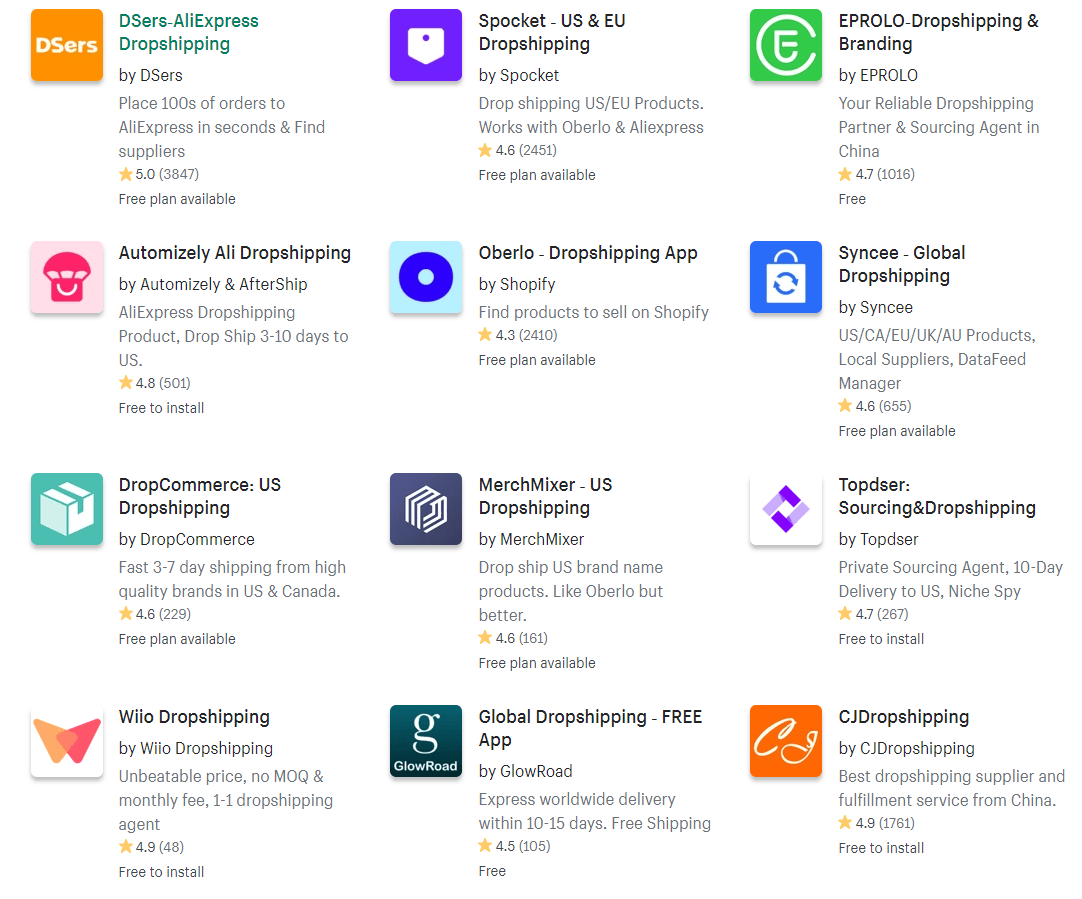
Which is Better?
You should use WooCommerce for dropshipping because of the following:
-
- Store customization capabilities
-
- Unlimited themes and plugins
-
- In-house development skills
-
- Long-term savings
When it comes to design and themes, plugins and integrations, payment methods, SEO, and customer support, WooCommerce is the best alternative.
You should use Shopify for dropshipping because of the following:
-
- No technical skill needed
-
- Security & maintenance
-
- Rich in third-party shipping
-
- 24/7 support
Regarding ease of use, sales features, security, and affordability, Shopify is a superior choice for developing a dropshipping store to WooCommerce.
Shopify is perfect for small businesses and startups who don’t have the time or skills to invest in eCommerce. WooCommerce is for those who want more freedom, control, and the power to personalize everything down to the smallest detail.
However, each person’s needs are unique. Your platform will be determined by your requirements, budget, convenience of use, availability of numerous payment methods, integrations, and scalability.




